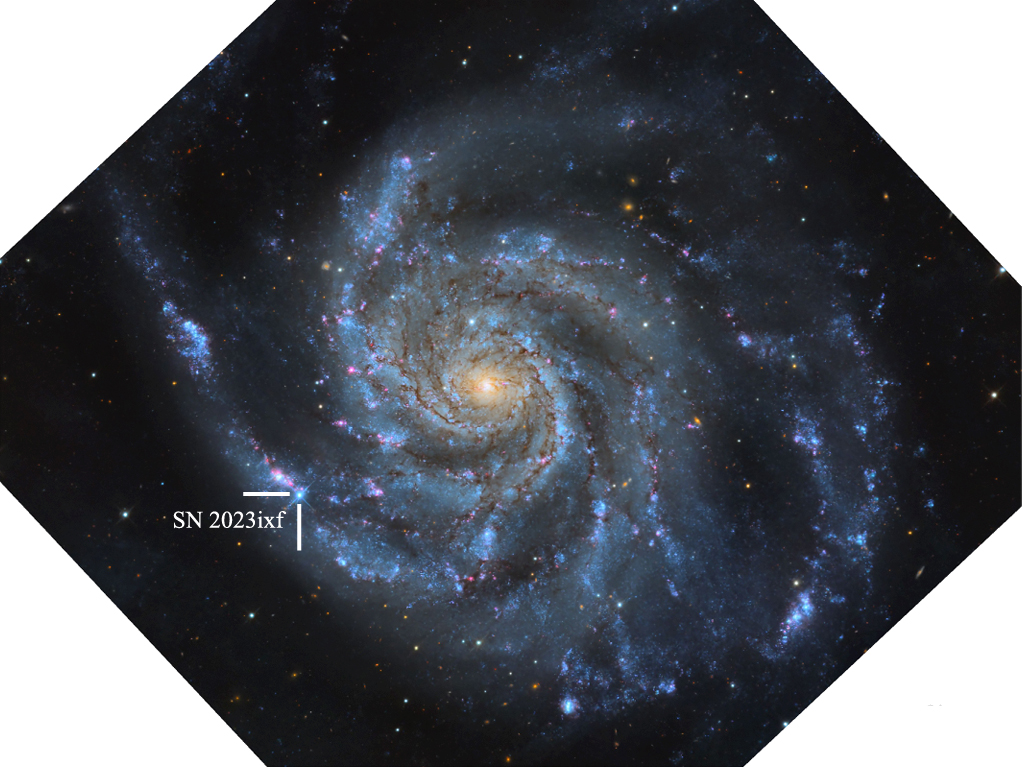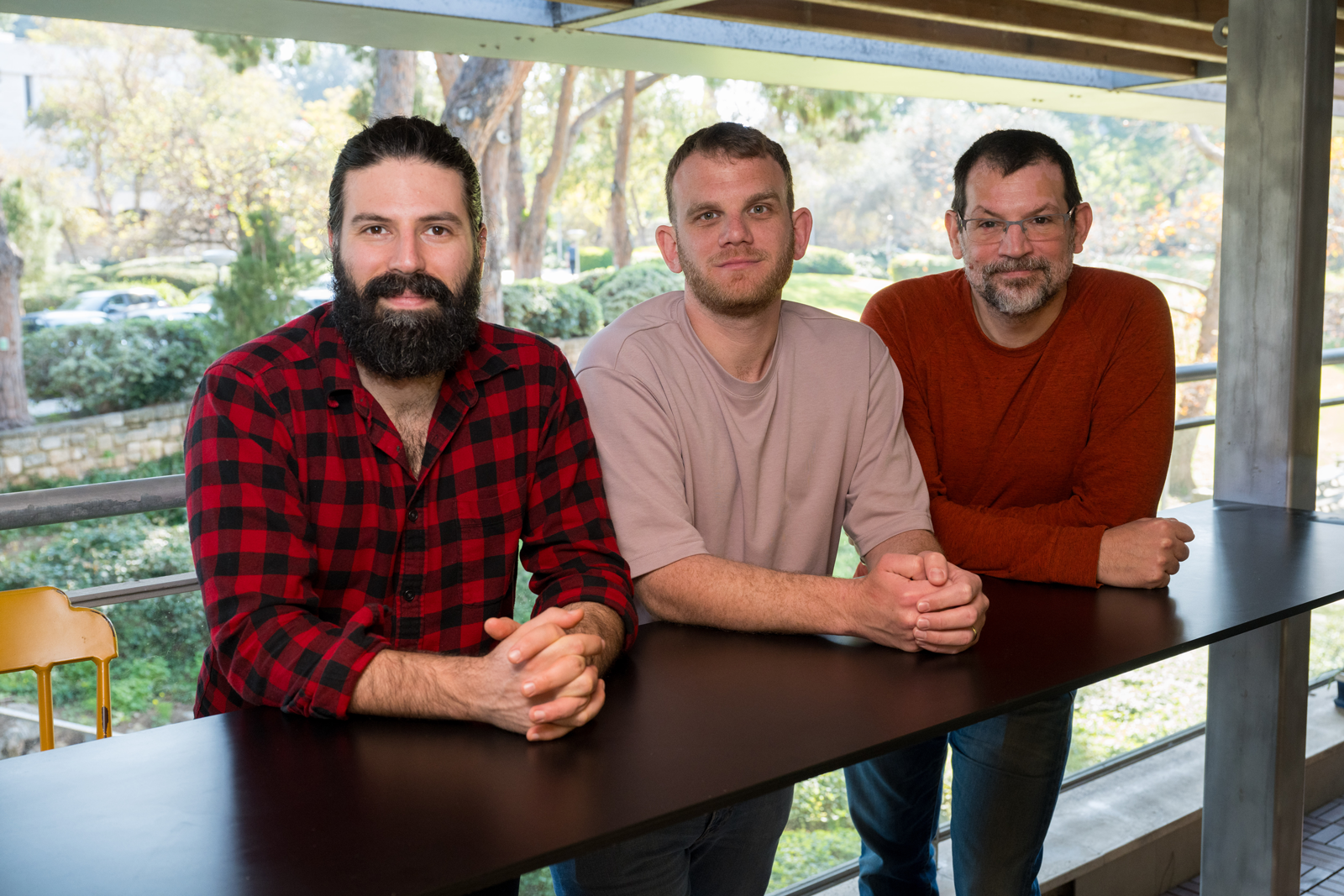REHOVOT, ISRAEL—March 27, 2024—Humankind has long turned to the skies in search of answers. Accounts of supernovae – exploding stars – go back thousands of years, but while we know today that these events create the building blocks of life itself, the conditions that cause a star to explode still remain very much a mystery. Researchers from the Weizmann Institute of Science have now made major headway toward better understanding these fascinating phenomena, which created us and all that we know. Through a combination of luck and determination, they were able to gather data from a once-in-a-lifetime supernova. Their findings are being published today in Nature.
Supernovae were, until very recently, considered an extremely rare phenomena – occurring in our galaxy once a century, at best, while the last observable explosion took place hundreds of years ago. Advances in telescope technology can’t help recreate the astonishing effect they must have had on our ancestors, who could witness supernovae lighting up the night sky with the intensity of a hundred million suns. These advances make up for that, however, both by helping identify supernovae in distant galaxies, and by supplying much more data than was previously possible. Still, the same problem persists: Since we can’t predict the occurrence of an explosion, astrophysicists usually have to play the part of space archeologists, arriving at the scene after the event has already occurred and trying to cobble information together from the remains.

“That’s what makes this particular supernova different,” says PhD student Erez Zimmerman of Prof. Avishay Gal-Yam’s group in Weizmann’s Particle Physics and Astrophysics Department. “We were able – for the very first time – to closely follow a supernova while its light was emerging from the circumstellar material in which the exploding star was embedded.” In simpler terms, this was equivalent to getting to the scene of the crime while the murder was still taking place.
The scientists are the first to admit that they were extremely lucky. Gal-Yam’s team applied for research time on NASA’s Hubble Space Telescope, hoping to gather UV spectral data on any supernova that’s interacting with its environment. Instead, they got the chance to witness in real time one of the closest supernovae in decades: a red supergiant exploding in a neighboring galaxy called Messier 101.

Of course, while lady luck provided the opportunity and the means, the researchers still needed to gather the data, which required a lot of hard work. The supernova was discovered on a Friday, the beginning of the weekend in Israel and right before the weekend in Baltimore’s Space Telescope Science Institute, the operations center for the Hubble Telescope. Complicating things even further, it took place two days before Zimmerman’s wedding. The team persevered and pulled an all-nighter on the very same Friday, delivering the necessary measurements to NASA in the nick of time. “It’s very rare, as a scientist, that you have to act so swiftly,” says Gal-Yam. “Most scientific projects don’t happen in the middle of the night, but the opportunity arose, and we had no choice but to respond accordingly.”
The opportunity was doubly enticing because of its coordinates. Not only did the team succeed in getting the sluggish Hubble to assume the right angle for recording the necessary data, but because of the explosion’s relative proximity, it turned out Hubble had already made recordings in this sector of the universe many times before. Turning to the NASA archives, members of Gal-Yam’s team and many other groups were able to acquire data from before the star’s eventual demise – when it was still just a red supergiant in its final stages of life – thus creating the most complete portrait of a supernova ever: a composite of its last days and death.
Fortunately, their determination paid off. Analyzing the UV and X-ray data received from NASA’s Hubble and Swift satellites, as well as many of the best telescopes across the globe, the researchers were able to map out the two outer layers of the exploding star and come up with an extraordinary hypothesis. “Calculations of the circumstellar material emitted in the explosion, as well as this material’s density and mass before and after the supernova, reveal a discrepancy, which makes it very likely that the missing mass ended up in a black hole that was formed in the aftermath of the explosion – something that’s usually very hard to determine,” says PhD student Ido Irani of Gal-Yam’s team.
“We were able – for the very first time – to closely follow a supernova while its light was emerging from the circumstellar material in which the exploding star was embedded.”
“Stars behave very erratically in their senior years,” says Gal-Yam. “They become unstable and we usually cannot be sure which complex processes occur within them, because we always start the forensic process after the fact, when much of the data has already been lost.” Because of the star’s proximity and the high quality of the data gathered, “this study presents a unique opportunity to better understand the mechanisms that lead to the conclusion of a star’s life and the eventual formation of something entirely new,” Zimmerman says.
What will happen to the matter that made up Messier 101’s former red supergiant? We will probably never find out, but the later stages of the supernova are still ongoing, and new data are still coming in. So it is possible that, after all, this study and others that will follow will help us gain a better understanding of how we got here.
Prof. Avishay Gal-Yam is the incumbent of the Arlyn Imberman Professorial Chair. He is head of the Center for Experimental Physics and the André Deloro Institute for Advanced Research in Space and Optics, both at Weizmann. His research is supported by the Norman E Alexander Family M Foundation ULTRASAT Data Center Fund.
